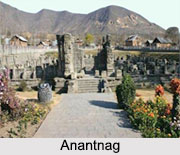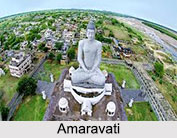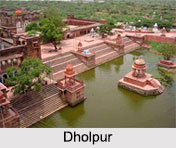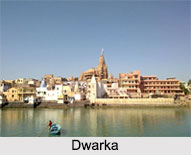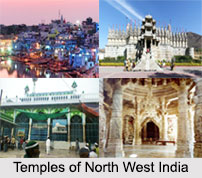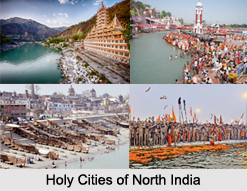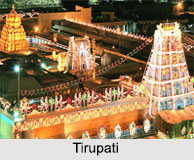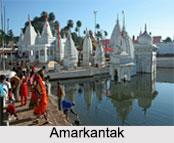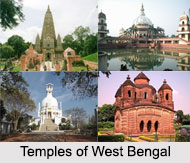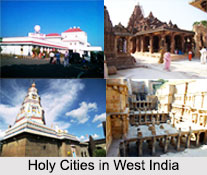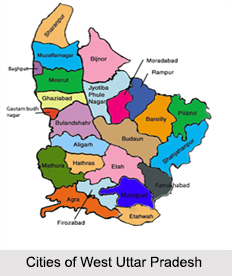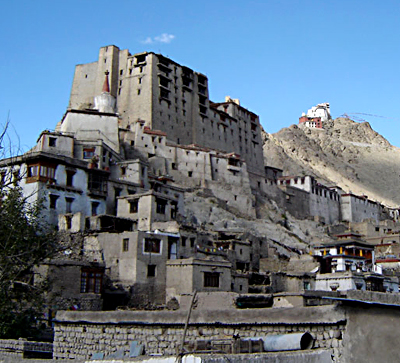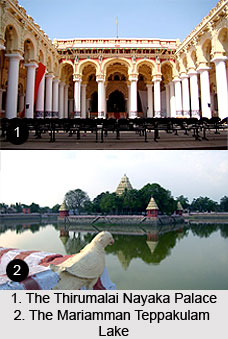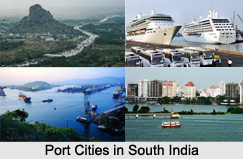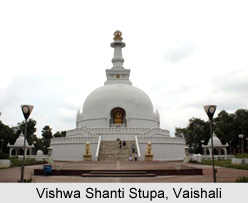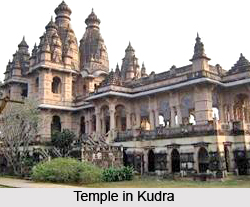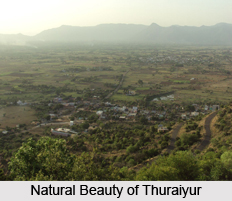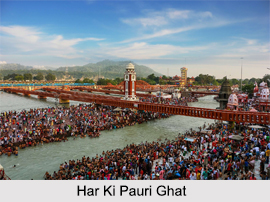Introduction
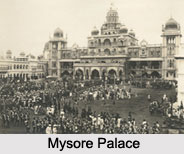 History of Mysore has a long and interesting tale of the Wodeyar Dynasty, British Imperialism and the Indian Freedom Struggle. Mysore or Mysuru has mythological history also.
History of Mysore has a long and interesting tale of the Wodeyar Dynasty, British Imperialism and the Indian Freedom Struggle. Mysore or Mysuru has mythological history also.
Derivation of Mysore
The very word "Mysore" came from the stained version, "Mysooru" or "Mysuru" that is derived from the phrase "Mahishura" or "Mahishasurana Ooru". This means the town of Mahishasura in Kannada language, the local language of the Indian state of Karnataka.
Mythological History of Mysore
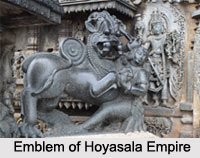 According to the mythological history, Mahishasura was a demon Mahisha with a buffalo head, who ruled the Earth. He tortured the people and the gods and goddess and captured Heaven. The goddesses and gods invoked Goddess Parvati to save themselves. From there, took the birth of Chamundeshwari. Goddess killed the monster on top of the Chamundi hills near Mysore.
According to the mythological history, Mahishasura was a demon Mahisha with a buffalo head, who ruled the Earth. He tortured the people and the gods and goddess and captured Heaven. The goddesses and gods invoked Goddess Parvati to save themselves. From there, took the birth of Chamundeshwari. Goddess killed the monster on top of the Chamundi hills near Mysore.
Hence the hill and the city have the names Chamundi Hill and Mysore respectively. According to the folklore, it is said that after killing Mahisasura, the Goddess stayed on top of Chamundi hills. There located a temple dedicated to the Goddess Chamunda.
Early History of Mysore
Early history of Mysore stated the rise and fall of many empires of Hindu and Muslim dynasties. Before the rise of the Ganga Dynasty of South India, in the 10th century there was little historical evidence associated with Mysore. The Gangas set up their power in the 2nd century and they ruled over a large part of Mysore till about 1004. In the 3rd century they established their capital at Talakad on the banks of the Kaveri River.
On Chamundi Hills, there is an inscription that was done in the year 950 AD during the reign of the Ganga Dynasty. This inscription is the oldest inscription found in Mysore or Mysuru. After the Ganga Dynasty, the Chola Dynasty ruled Mysore for over a century. The Chalukyas followed the Cholas.
The Hoysala Empire drove the Chola Dynasty from the remaining part of Mysore region in the 12th century. Hoysalas had a vast contribution in erecting the temples with great architectural skills. Hoysalas also reconstructed the existing temples in Mysore and on the Chamundi Hills, which proved the inscription that dated in 11th to 12th Century.
Medieval History of Mysore
Medieval History of Mysore began with fall of Hoysalas. After the Hoysalas came the kings of Vijayanagar Empire and then the Yadu dynasty came of Mysore to power in the year 1399. They were the feudatories of the Vijayanagar Kings. The feudal lords and the Vijaynagara Empire had the vast contribution in erecting the temples in Mysore. After the downfall of Vijaynagara, the Wodeyar Dynasty began to rule till Tipu Sultan emerged in power. During Wodeyar Rule, The kings of Wodeyar Dynasty built a fort to save the city from Islam invasion. Lastly, the Wodeyar moved the capital from Mysore to Srirangapatna. After the downfall of Tipu Sultan in 1799, Mysore became the capital of the Wodeyars once again.
Kingdom Of Mysore
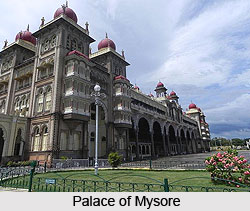 The amazing architects of the Wodeyar dynasty sculpted the kingdom of Mysore as a southern kingdom of India. He ruled the state since 1399-1947, until India won independence from the colonial chains that was laid by the British and integrated the princely states like, Mysore into the Republic of India. A succession of 24 Wodeyar rulers(as has been counted from the date of its origin to the last king), and the marvellous contributions of the heroic Hyder Ali and his illustrious son , Tipu Sultan, maintained the heritage of magnificence that Mysore was attributed with.
The amazing architects of the Wodeyar dynasty sculpted the kingdom of Mysore as a southern kingdom of India. He ruled the state since 1399-1947, until India won independence from the colonial chains that was laid by the British and integrated the princely states like, Mysore into the Republic of India. A succession of 24 Wodeyar rulers(as has been counted from the date of its origin to the last king), and the marvellous contributions of the heroic Hyder Ali and his illustrious son , Tipu Sultan, maintained the heritage of magnificence that Mysore was attributed with.
Background and Origin
The kingdom was born as a small state, located in the city of Mysore. Vijaya and Krishna Wodeyar , hailing from the Yadu Vanshi or, Jadon/Jadeja Rajputs , founded the kingdom. History recounts that they shifted from Gujarat to Vijaynagar, where from they established their foothold in the Mysore Mahisasur and assumed the reputed title of the Wodeyars . It continued to stay in its diminutive form of serving as a tributary dominion to the kingdom of Vijaynagar Empire , till the latter stumbled to decline in the second half of the sixteenth century. Following the footsteps of every other vassal state of Vijaynagar, Mysore acquired its much-coveted independence, during the reign of Raja Wodeyar and his renowned successor, the glorious Kantheerava, in the mid 1600`s. The kingdom extended its sway to almost the whole of the southern part of modern map of Karnataka, and portions of the neighboring states too.
Arasus Of Kalale
After Chamaraja Wodeyar VI, the failure of the direct male line not only called for the adoption of an heir, but also invited the rise of the Arasus or "feudal barons" to the helm of things. The office of the "Dalavoy" or chief -commander of the royal military became a vital hereditary aspect. Intermarriages between the regal family of Mysore and the Arasus of Kalale, turned out to be the order of the day. This perpetuated the generations of a legitimate dynasty . This pleasant bond was sustained even in the 20th Century; HH Maharani Kempa Nanjammani Vani Vilasa Sannidhana Avaru, the regent of Mysore (1894-1902) and mother of HH Maharaja Krishnaraja Wodeyar IV, descended from this family-tree.
Hyder Ali & Tipu Sultan
Hyder Ali(1722-1782) evolved as the de facto ruler of the kingdom of Mysore , by virtue of his efficacy and reliability as a good manager of imperial business.Maharaja Krishnaraja Wodeyar was highly impresed with this man of substance, Hyder Ali who ascended the stairs of promotion from the insignificance of a foot-soldier in the royal army.
Hyder Ali offered a formidable resistance to the British intruders. A wise warrior , he is celebrated for joining hands with the famous French general , Dupleix and introducing modern Western weapons like guns, and warfare-techniques into the organisation of an Indian army for the first time.
His astounding ability at the attack of Devanhali(1749) arrested the attention of the Minister of the Raja of Mysore, Nanjiraj and he was rewarded with the priviledge of the right to independent decisions.This premonitioned his supremacy over the Raja and the Minister , later on. The precious treasures of Bednor , acquired during the seige of Kanara in 1763, paved the way for the making of the most exquisite capital of India.In 1765 he was however defeated by the Marathas. These imperial designs aroused the concern of the Madras Presidency of the British colonisers.The resultant was the formulation of a contractual unity between the British and the Nizam of Hyderabad in 1766 against the common enemy.
What seemed inevitable, was a fuming Anglo-Mysore rivalry . However the benefits of this treaty was hardly visible , when the British was faced with a strong , united force of 50,000 men and 100 guns. Still, British war-skills surpassed the foe`s might in the battle of Chengam (September 3, 1767), and again in that of Tiruvannamalai (Trinornalai) .Hyder suffering severe loses on the western coast , approached the conclusions of peace propositions , but being refused , moved with his army to the outskirts of Madras. The final aftermarth of the First Anglo-Mysore War(1766-1769), was the fortifying treaty of April 1769, securing the mutual restitution of all conquests, and for mutual aid and alliance in defensive war.
The seed of the Second Anglo-Mysore War was already sown in the preceeding First Anglo-Mysore War.The Maratha raids against Mysore in 1772 placed Hyder Ali in dire straits .Mysore got squashed due to the Britisher`s breach of faith in the peace-settlements of 1769 and denial to provide help to Mysore. Hyder Ali avenged this betrayal by capturing Mahé from the French in 1779 and then in 1780 absolutely crushed a British force, presided by Colonel Baillie in the invasion of the Carnatic region.
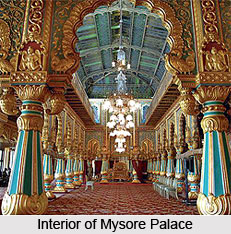 The Second Anglo-Mysore War witnessed the valor of Hyder`s outstandingly brave son , Tipu Sultan. Tipu who had gained experience in the Mysore- Maratha war of 1769-1772 , taught the English very bitter lessons. Baillie was taken into captivity .While Sir Hector Munroe, the victor of the crucial battle of Buxar against Bengal and of the tussle against the three Indian emperors , namely the Mughal Emperor Shah Alam, and the Oudh Nawab, Shuja-ud-daula and the Bengal Nawab Mir Qasim , desperately ran for his life to Madras . Tipu devastated Colonel Braithwaite at Annagudi near Tanjore on 18 Feb 1782. And by December 1782 , Chittur became Mysore`s property.
The Second Anglo-Mysore War witnessed the valor of Hyder`s outstandingly brave son , Tipu Sultan. Tipu who had gained experience in the Mysore- Maratha war of 1769-1772 , taught the English very bitter lessons. Baillie was taken into captivity .While Sir Hector Munroe, the victor of the crucial battle of Buxar against Bengal and of the tussle against the three Indian emperors , namely the Mughal Emperor Shah Alam, and the Oudh Nawab, Shuja-ud-daula and the Bengal Nawab Mir Qasim , desperately ran for his life to Madras . Tipu devastated Colonel Braithwaite at Annagudi near Tanjore on 18 Feb 1782. And by December 1782 , Chittur became Mysore`s property.
British bounced back under the supervision of Warren Hastings who commissioned Sir Eyre Coote to subdue Haidar with three successive defeats in battles of Porto Novo, Pollilur and Sholingarh. Meanwhile Tipu was compelled to withdraw from the conquest of Wandiwash, and Vellore was provisioned. Tipu quelled Brathwaite on the banks of the Coleroon in February 1782. But Lord Macartney, the governor of Madras,appeared with the British fleet and occupied Negapatam. Hyder Ali was pressurized to acknowledge the paramountcy of naval power. He sent Tipu to resort to the help of the French fleet on the west coast, when his sudden demise occurred at Chittur in December 1782. The young Tipu Sultan retained his father`s crusade against the foreign adversary, the English. 1783 British annexed Coimbatore, but it did not gift a total triumph to any of the parties.
The Second Anglo-Mysore War ceased with the signing of the landmark achievement of the Treaty of Mangalore in 1784, wherein a native potency ordered clauses to the Western authority for the last time.Both the sides conceeded to the restoration of each other`s land as per as the pre-war conditions.
Tipu`s invasion of the state of Travancore in 1789, which was a British protectorate, precipitated into three years war, the Third Anglo-Mysore War, and invoked the disaster for Mysore. France, entrapped in the French Revolution and shaken by British Sea command, restrained their march with Mysore. Malabar, Salem, Bellary, and Anantapur were surrenderd to Madras Presidency.And the Marathas, the Nizam of Hyderabad, and the Madras Presidency - all British allies or agents saw their own advantage in this reduction of Mysore`s realms.
The nightmare of Napoleon`s invasion in India through the bridge of Tipu`s alliance with the French powers , led the British imperialists to storm into the capital , Srirangapatnam in 1799. British availed of the prevalent internal dispute .They were assisted by the Nizam of Hyderabad, the Mahratta Confederacy, and Travancore. The unflinching patriot Tipu was deceived by one of his generals ,called Mir Sadiq , purchased by the British. The valiant martyr, Tipu was killed in the fight for his land on May 4, 1799.
Indian History will never forget the memory of the brilliant warriors and zealous administrators like , Hyder Ali and Tipu Sultan , who raised their sword of courage with the strongest of determination, rarely seen.
Status Of Mysore After Tipu Sultan -Till Recent Times
The residue of Mysore`s kingdom that was left after Tipu`s death, was relegated to the background as a princely state. The minor Krishnaraja Wodeyar III was crowned the king under the regency of his adoptive grandmother, HH Maharani Lakshmi Ammani Avaru, a kin of HH Maharaja Krishnaraja Wodeyar III. Diwan Purnaiya was recruited as the diwan or first minister.
In 1830 , the royal capital was established in Bangalore.The scenario became worst when the British cunningly alleged against the Wodeyars of misgovernment and grabbed the hereditary sovereignty of the Wodeyars in 1831. This aggressive attitude of the British affected the other princely states of Thanjavur, Satara, Sind, Avadh and Jhansi. But the indomitable Maharaja pursued his case to British courts, and obtained a conducive verdict culminating in the Rendition of 1881, which returned to the Wodeyar dynasty their throne . Mysore again rose to the limelight of pre-eminence and the aura of being a model state. Indeed , Jawaharlal Nehru, the first Prime Minister of Independent India , praised the striking modernization and industrial development of the state of Mysore, on his visit to the place in 1920.
In the post-Independence era, a new Republic came into existence. Mysore was mingled into the Union of India . HH Maharaja Jayachamaraja Wodeyar signed the Instrument of Accession on 9 August, 1947.The regal suzerainty of the Wodeyars came to an end. The kingdom initially remained a separate state within the Union of India .However, in 1956 Kannada-speaking regions belonging until then to the adjacent provinces of Madras, Bombay and Hyderabad were fused with Mysore to give birth to a Kannada-speaking state under the former name. The name of the state was changed to Karnataka in 1973.
It is a truth that the blue-blood of Mysore`s royal family retain no power , but the legacy of their splendor persists in their enchanting testimonials, such as the forever-beautifil Palace of Mysore, radiant in its unique appeal.
Maratha Mysore Conflict
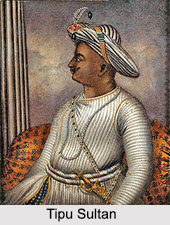 Mysore being the under Hindu rule, was once captured by Hyder Ali who made his territory full fledged with the Muslim power. This ruling scenario of Mysore was never accepted by the Marathas who always wanted to rule the territory and as a result they neither accepted the rule of Hyder Ali nor could the rule of Tipu Sultan satisfy them. Moreover in these circumstances, a stifled conflict was forming in between the Marathas and Tipu Sultan.
Mysore being the under Hindu rule, was once captured by Hyder Ali who made his territory full fledged with the Muslim power. This ruling scenario of Mysore was never accepted by the Marathas who always wanted to rule the territory and as a result they neither accepted the rule of Hyder Ali nor could the rule of Tipu Sultan satisfy them. Moreover in these circumstances, a stifled conflict was forming in between the Marathas and Tipu Sultan.
Sir John Macpherson, predecessor Lord Cornwallis had adopted the policy of intervention in the Mysore-Maratha War of 1786-1787. He offered to supply the Marathas with five battalions of troops to be employed anywhere either offensively or defensively. He justified a revision of the earlier policy of neutrality on the ground that the Company"s interests would be better served by joining a powerful party like the Marathas. Such a policy would reduce the military expenses of the East India Company and keep the Marathas on the English side should the French or Tipu Sultan cause any trouble to the English. The authorities in England made their stand still more explicit after their observation that they were completely satisfied with their possessions and will engage in no war for the purpose of further acquisitions.
When Lord Cornwallis took charge as the Governor-General in September 1786, he revised the policy of supporting the Marathas against Tipu Sultan. Macpherson"s policy would have involved the Company in a complicated political and military situation. It would be a breach of the Treaty of Mangalore with Tipu, which had enjoined strict neutrality on both parties in case either of them was at war with other Powers. If the English were to assist the Marathas, directly or indirectly then Tipu would be provided with a just ground to join the French. The latter"s delusion from Indian politics was the principal objective of British policy. Moreover, it was contrary to the spirit of the Pitt"s India Act just passed (1784), which was emphatic that the Company"s servants in India should avoid unnecessary interventions in the disputes of the native powers. Accordingly, Cornwallis informed the Marathas and the Nizam about the fact that he had revoked the previous engagements and withdrawn the offer of help to them. Cornwallis wrote to Dundas that Macpherson was guilty of a breach of an Act of Parliament in the offer, which he made of aid to Poona Government, and that he was guilty of basely degrading the national character, by quibbles and lies which he made use of to evade the performance of it. Cornwallis felt it difficult at first to extricate the Company from its commitments and declared their offering assistance to the Marathas as an awkward foolish scrape. On the pretext of strictly adhering to the subsisting treaties, he refused help to the Marathas and the Nizam.
The real cause for the stiff stand of Cornwallis was a real matter of concern. His policy was not out of any regard for Tipu Sultan, nor was he genuinely interested in maintaining the subsisting treaties, nor wedded irrevocably to a Pacific system. It was dictated purely as a measure of expediency. He too was as much conscious of the advan¬tages to the Company of a war of conquest like Macpherson. He wrote to the Court of Directors that the safety of the Company"s poss¬essions would best be preserved by letting the two formidable native powers engage in a war of exhaustion. But he differed from Macpherson as to the suitable occasion for intervention, for the finan¬cial and military position of the Company was far from satisfactory at the moment.
The condition of the Company"s military was in despicable state and the financial position was still worse. Added to this, a war would involve the Company in diplomatic complications as well, for by the Treaty of Paris, England and France were prevented from participating in a war among the native powers. Cornwallis was afraid that English assistance to the Marathas might force Tipu Sultan to seek French aid. As a result, the very purpose of going to war, namely to eliminate the French from the arena of Indian politics would be defeated. The effect of Macpherson"s promise of aid to the Marathas had already brought the French and Tipu Sultan closer together, and the latter had applied for 4,000 Europeans to remain constantly in his pay. These factors compelled Cornwallis to revise the decision of his predecessor.
Cornwallis adopted such a policy despite his full knowledge that it would disappoint the Marathas and invite their wrath on the Company. But he argued that British neutrality would shorten the war amongst the natives, and would render the European aid unnecessary. The Company would be relieved of the necessity of preparing for war. Besides, such a policy was in accordance with the instructions of the Home Government who had frequently directed their servants in India to observe strict neutrality in the disputes of Indian powers and to improve British relations with them by steady adherence to the subsis¬ting treaties between the Company and them.
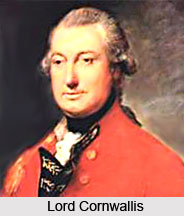 However, Cornwallis did not stick to this policy of neutrality for long. The moment the Company"s finances and military power improved, he began to envisage the reduction of Tipu"s power, whose successes against the Marathas and the Nizam further excited the jealousy of the English. According to the observation of Cornwallis, whether the Peshwa can place any reliance in Tipu"s adherence to the treaty after dissolution of the compact between the Peshwa, Madajee Bhonsle, Tukojee Holkar and Nizam Ali Khan, was equally a subject of conjecture at that time. On the pretext that Tipu might invade the Carnatic, Cornwallis direct¬ed Malet, the English agent at Poona, to enquire from Nana Fadnavis whether the Marathas were willing for an offensive alliance with the English against Tipu. The basis of such an alliance was the appropriation of Tipu"s territories, which were adjacent to the frontiers of the allies, after the conquest was completed. Being apprehensive lest the Maratha response should be unfavourable in the light of earlier British Government refusal of aid to them, Cornwallis assured Nana that the English were sincere in their offer this time. He also added that England had approved of such an alliance as well. Not only was Nana approached but an attempt was made by Cornwallis to win the other Maratha chieftains as well. Foster was authorized at Nagpur to invite Madajee Bhonsle to a defensive alliance against Tipu Sultan. Likewise Palmer was asked at Gwalior to induce Mahadji Sindhia to do the same.
However, Cornwallis did not stick to this policy of neutrality for long. The moment the Company"s finances and military power improved, he began to envisage the reduction of Tipu"s power, whose successes against the Marathas and the Nizam further excited the jealousy of the English. According to the observation of Cornwallis, whether the Peshwa can place any reliance in Tipu"s adherence to the treaty after dissolution of the compact between the Peshwa, Madajee Bhonsle, Tukojee Holkar and Nizam Ali Khan, was equally a subject of conjecture at that time. On the pretext that Tipu might invade the Carnatic, Cornwallis direct¬ed Malet, the English agent at Poona, to enquire from Nana Fadnavis whether the Marathas were willing for an offensive alliance with the English against Tipu. The basis of such an alliance was the appropriation of Tipu"s territories, which were adjacent to the frontiers of the allies, after the conquest was completed. Being apprehensive lest the Maratha response should be unfavourable in the light of earlier British Government refusal of aid to them, Cornwallis assured Nana that the English were sincere in their offer this time. He also added that England had approved of such an alliance as well. Not only was Nana approached but an attempt was made by Cornwallis to win the other Maratha chieftains as well. Foster was authorized at Nagpur to invite Madajee Bhonsle to a defensive alliance against Tipu Sultan. Likewise Palmer was asked at Gwalior to induce Mahadji Sindhia to do the same.
Thus, there was once again a change in the English policy which was alternating between neutrality and intervention. As per the records found in history, every Governor General was inclined to adopt a vigorous forward policy, but was sometimes restrained to do so only by the exigencies of the situation which would not every time guaran¬tee success to the British arms. The King of Mysore, Tipu Sultan, also actively tried to counteract these developments. He contacted Nana and prepared the ground for an Indian alliance. In support of this alliance, Nana opined that it was not the time of insisting on the reimbursement of the wrongs that had been made but to recover that part of the Carnatic conquests of the Chatrapati Shivaji which was now under the seize of the English.
As the Marathas always wanted to capture Mysore and establish their rule in the territory they could not stand Tipu in power. They knew that Tipu was in alliance with the French to strengthen his power and it was difficult to defeat Tipu without any help from the British military force. Moreover, the East India Company had a grudge against Tipu and they were trying to find a support to go against Tipu. It was known by the Company too that Tipu had made an alliance with the French. In the meantime, the Marathas took the queue. To strengthen their position, the Marathas joined hand with the British to extricate Tipu from the power of Mysore. Thus two different parties were formed, one being the Marathas with the East India Company and another French with Tipu. Though in the actual sense, no war took place in between two parties, a suppressed feeling of resentment was forming and this was the situation that gave rise to the conflict between two alliance parties.
Moreover, Tipu Sultan was in touch with the Nizam as well, who was interested in recovering the Guntur Sarkar. Before con¬cluding any positive alliance the parties agreed upon a truce for three years and six months. These developments indicate that the two parties, English and Tipu, were extremely suspicious of each other. There was some difference in the policies of these two parties. Whereas the English adopted an extremely flexible policy of either neutrality or intervention as it suited their convenience. Tipu was quite firm in his stand, and adopted a determined and consistent policy of opposition to the British. The Marathas and the Nizam had no such fixed policy, for they were motivated purely by their self-interest and joined any party that would advance their interest.
